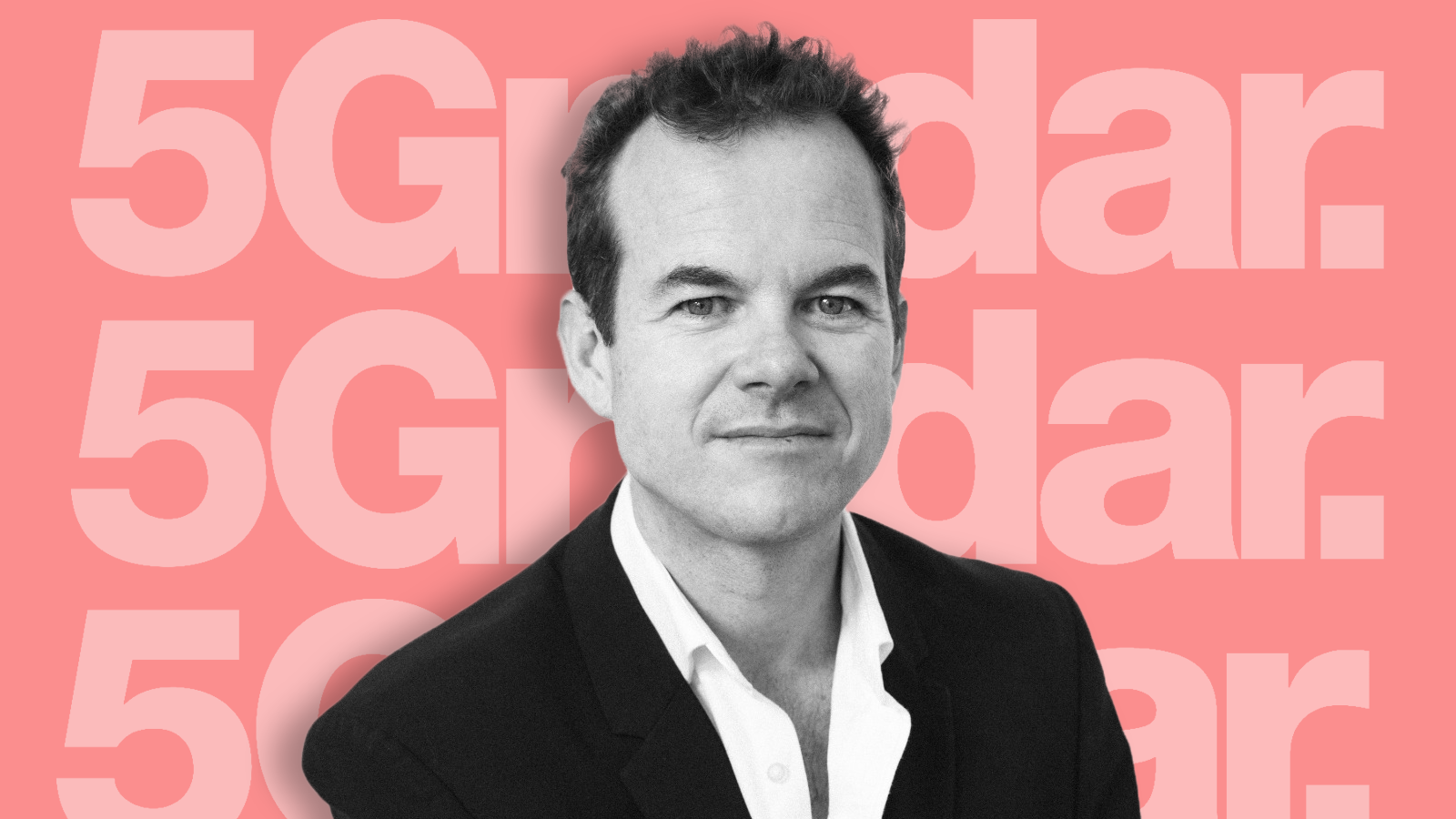Discover how MVNOs can make the most of 5G
Hamish White founder and CEO of telecoms software provider Mobilise explains how MVNOs need to seize the opportunities presented by 5G.

The Ericsson Mobility Report states that 5G mobile subscriptions will exceed half a billion by the end of 2021 — making 5G the fastest adopted mobile generation in history. The 4G rollout taught mobile virtual network operators (MVNOs) that they must take a more proactive approach if they are to successfully compete with larger mobile network operators (MNOs). Here, Hamish White, CEO of telecommunications software provider Mobilise, explores the 5G future of the MVNO.
When 4G became widely available, for several reasons, MNOs were slow to share it with MVNOs not least being the desire to keep those high spending data customers all to themselves for as long as possible. More than a decade later, the development of the MVNO market and evolution of consumer demands means that MVNOs need to find ways of increasing their own competitive advantage, to prevent being left behind.
"Experience tells us that a host migration can result in between five and 20 percent customer churn, high costs in a competitive industry."
Hamish White, Mobilise.
The delay in 4G availability from MNOs to MVNOs caused countless problems. For example, Spanish MVNO MovilDia had to make a costly and disruptive host provider switch from Orange to Vodaphone Spain to be able to offer its customers 4G back in 2018. Experience tells us that a host migration can result in between five and 20 percent customer churn, high costs in a competitive industry such as telecoms and even more so in the MVNO space where margins can be razor thin.
As consumer demand for greater reliability and data speed rises, the pressure mounts on MVNOs to provide the same 5G services as the MNO’s themselves and raises the question, how can MVNOs compete in the 5G era?
Stand out from the crowd
It’s been predicted for some time now that 5G will be the catalyst for the rise of specialised MVNOs and at the MVNOs World Congress 2020, this trend was reinforced by the industry —growth potential lies in enterprise 5G, not just consumer 5G. This has led to the recognition that to differentiate themselves from the competition, MVNOs should consider specialising in business to business (B2B) use cases.
These 5G use cases rely less on Enhanced Mobile Broadband (eMBB) and more on Ultra-Reliable and Low Latency Communications (URLLC) and massive machine-type communication (mMTC) of 5G networks.
Commenting at the congress, Dario Talmesio, principal analyst and practice leader at Omdia, said becoming specialised was “a great opportunity for MVNOs since many MNOs are starting to offer multiple, niche-focused brands to serve specific segments of the market”. This move by MNO’s to target specific segments versus their traditional “one size fits all” approach works to compete against MVNO’s specialised or segmented offerings, potentially reducing some of the market opportunity for MVNO’s.
SIGN UP FOR E-MAIL NEWSLETTERS
Get up to speed with 5G, and discover the latest deals, news, and insight!
To become 5G specialised, MVNOs must delve into market trends, analyse and identify where the 5G opportunity is prominent. Such an opportunity is in the development of Smart Cities. For instance, the United Nations predicts that 68 per cent of the world’s population will be living in urban areas by 2050, and IoT connectivity is going to be integral to the success of the smart cities that can efficiently manage power, transport and communications. The possibilities of 5G in smart cities was demonstrated with Romania’s first smart city, Alba Iulia, which was developed with Orange in 2018.
Take also for example, Standard Bank Mobile in South Africa, which specialises in finance and rewards its customers with one megabyte (MB) of data every time 20 South African rand is spent on a credit card.
Other areas that benefit from specialised 5G networks include healthcare and smart factories, where there is the potential for mass-adoption of the Internet of Things (IoT).
eSIMs
It is in the area of embedded Subscriber Identity Model Technology (eSIMs) that are becoming increasingly popular and necessary for both consumers and operators — which can also help MVNOs to shine. Research from the Telco Consumer Behaviour Survey by Capgemini Research Institute, found that over 40 per cent of consumers would prefer to activate mobile services using eSIMs, rather than visit a store to activate a physical SIM card.
"5G-capable eSIM offers greater flexibility as device owners can switch carriers without having to switch SIMs, as well as reduce costs to the operators."
Hamish White, Mobilise.
The 5G future of SIM cards lies in eSIMs, which still play the same integral role in 5G networks as previous SIM cards, but a fully integrated 5G-capable eSIM offers greater flexibility as device owners can switch carriers without having to switch SIMs, as well as reduce costs to the operators
Understandably, giving customers more control over their plan and easier access to switch providers can be off putting for Telcos who fear a loss of control over their customers, but it’s important to recognise how todays digital savvy consumers demand the convenience of digital products such as eSIMs. For telcos of all types, a digital strategy if properly understood and managed, will be reflected in enhanced revenue generation and customer retention.
Removing the need for a physical SIM card offers cost savings and greater efficiency opportunities for MVNOs, as it eliminates complex logistics processes, fulfilment charges and production costs. In addition, eSIMs are instantly onboarded into the device, making it both simpler for the customer to use and ultimately replacing the logistics of the operator with a cost efficient digital only process.
eSIMs are already being placed in a host of new cellular-enabled devices, such as wearables. Utilising 5G as it becomes ubiquitous , these devices will possess processing power that will rely on fully integrated eSIMs to manage their connection.
Helping drive this eSIM shift for MVNOs is Mobilise, which offers eSIM as a service. Mobilse makes the digital solution more user friendly by eliminating the need for a QR code, and instead uses in-app eSIM activation, which allows users to activate their eSIM profile in a simple one tap onboarding process. MVNOs can therefore offer eSIM technology, and ever increasing 5G capabilities, in a way that’s easier for customers to access.
Take a slice
Amongst these growing opportunities that will further support the era of 5G and increasing consumer expectations, MVNOs will also be able to adopt “network slicing”. Slicing allows the subdivision of one physical network into multiple networks (slices). Each ‘slice’ delivers specific network features tailored to the consumer or business segment dependent on use case.
"This presents opportunities for MVNOs to tap into different segments with tailored products and regain control over resources."
Hamish White, Mobilise.
This presents opportunities for MVNOs to tap into different segments with tailored products and regain control over resources. For example, different sectors benefit from different characteristics such as lower latency for medical and automotive sectors that require greater speed, security and resilience for data transmission, whereas logistics and smart manufacturing processes will benefit from streamlined machine to machine capability.
MVNOs must take advantage of network slicing, in order to share the opportunities that this business model offers to telcos, which is forecast to be worth $300 billion by 2025, according to The Global System for Mobile Communications Association (GSMA).
Consumer and business demands are changing and more is expected from network operators. Although MNOs often have the monopoly over spectrum via licencing and play an integral part in the adoption of new technology, MVNOs also play a key role in driving innovation and must seize the opportunities that 5G presents. By adopting new technologies and business plans, MVNOs can continue to prove their competitive advantage, reduce MNO dependency and gain more control over the market.

Hamish White is the CEO and Founder of Mobilise. White is a hands-on telecoms entrepreneur with 19 years’ experience supporting Tier 1 & Tier 2 International Telecommunications Operators. Before founding Mobilise, he worked as a consultant launching and growing start-up telecoms companies primarily in the MVNO domain. This included the launch of 8 MVNOs across 5 countries. His background is in technology, however White’s management experience spans the end to end telecoms value chain, including in-depth knowledge of sales & marketing, commercial, finance, operations and technology functions.
